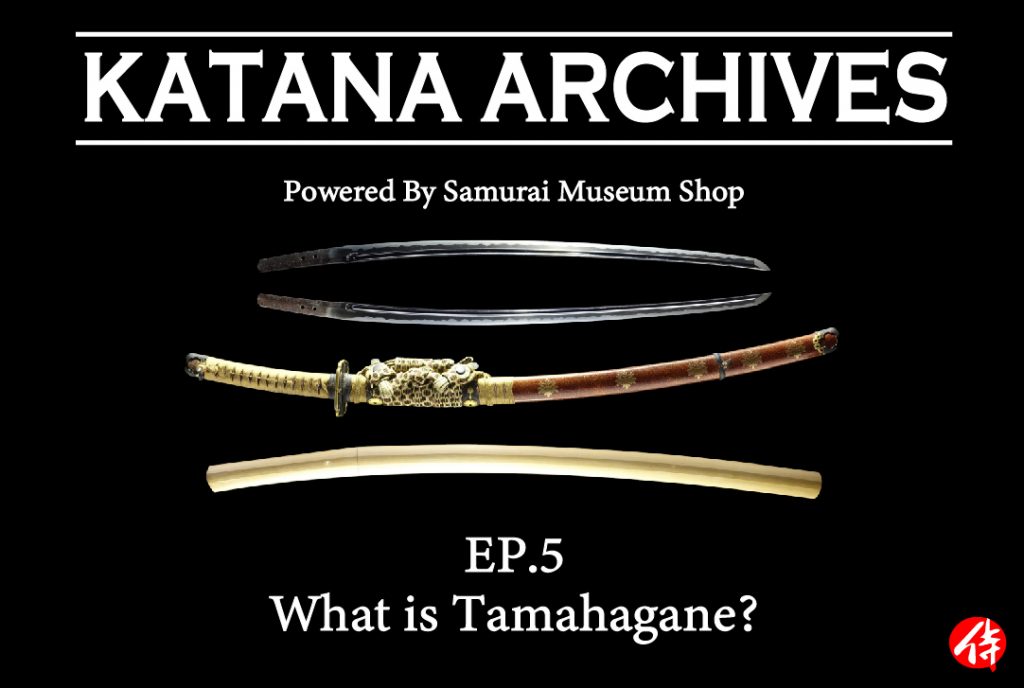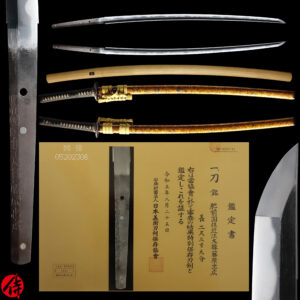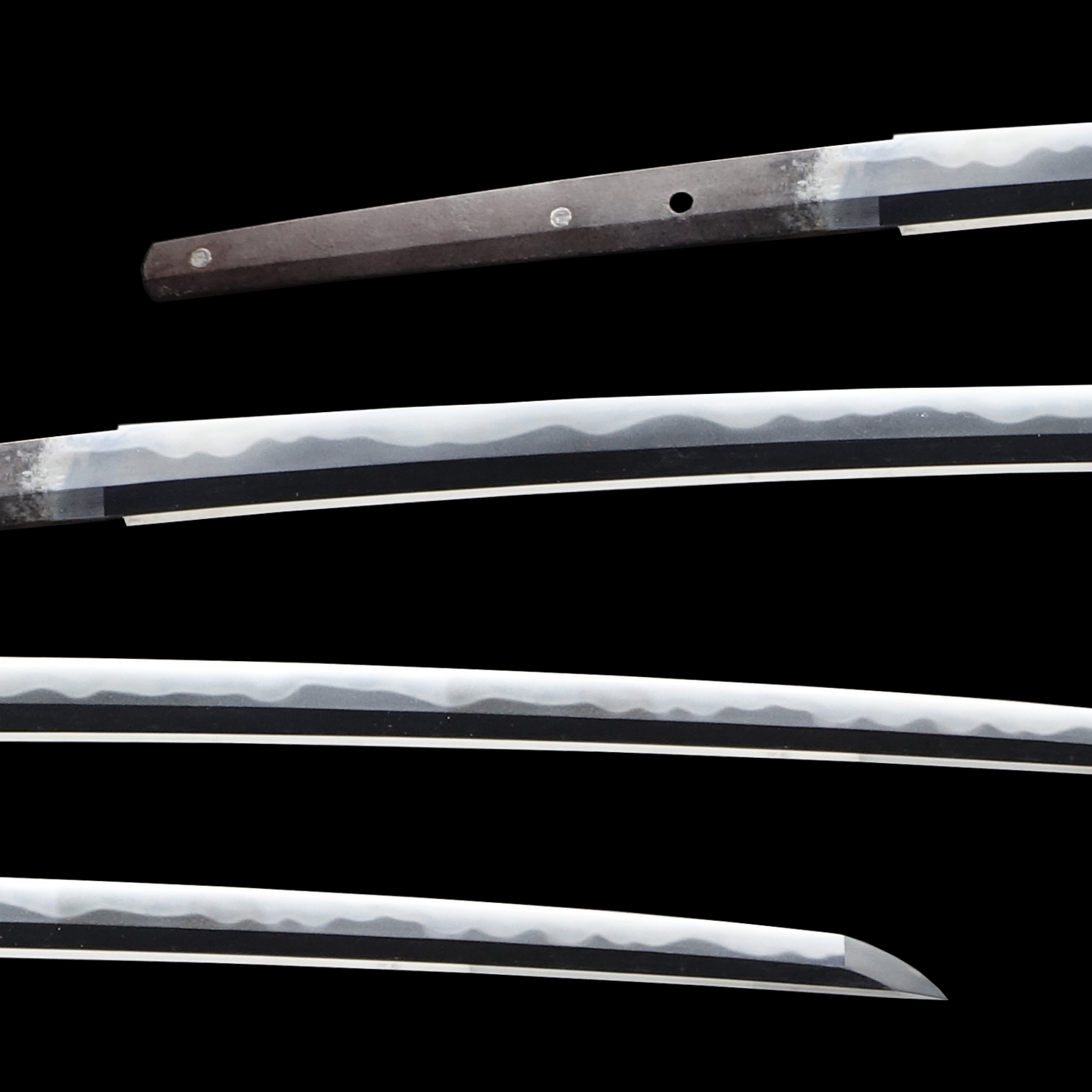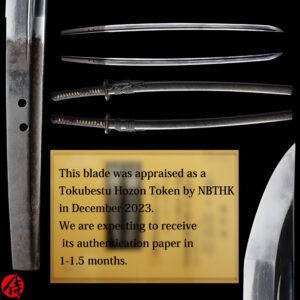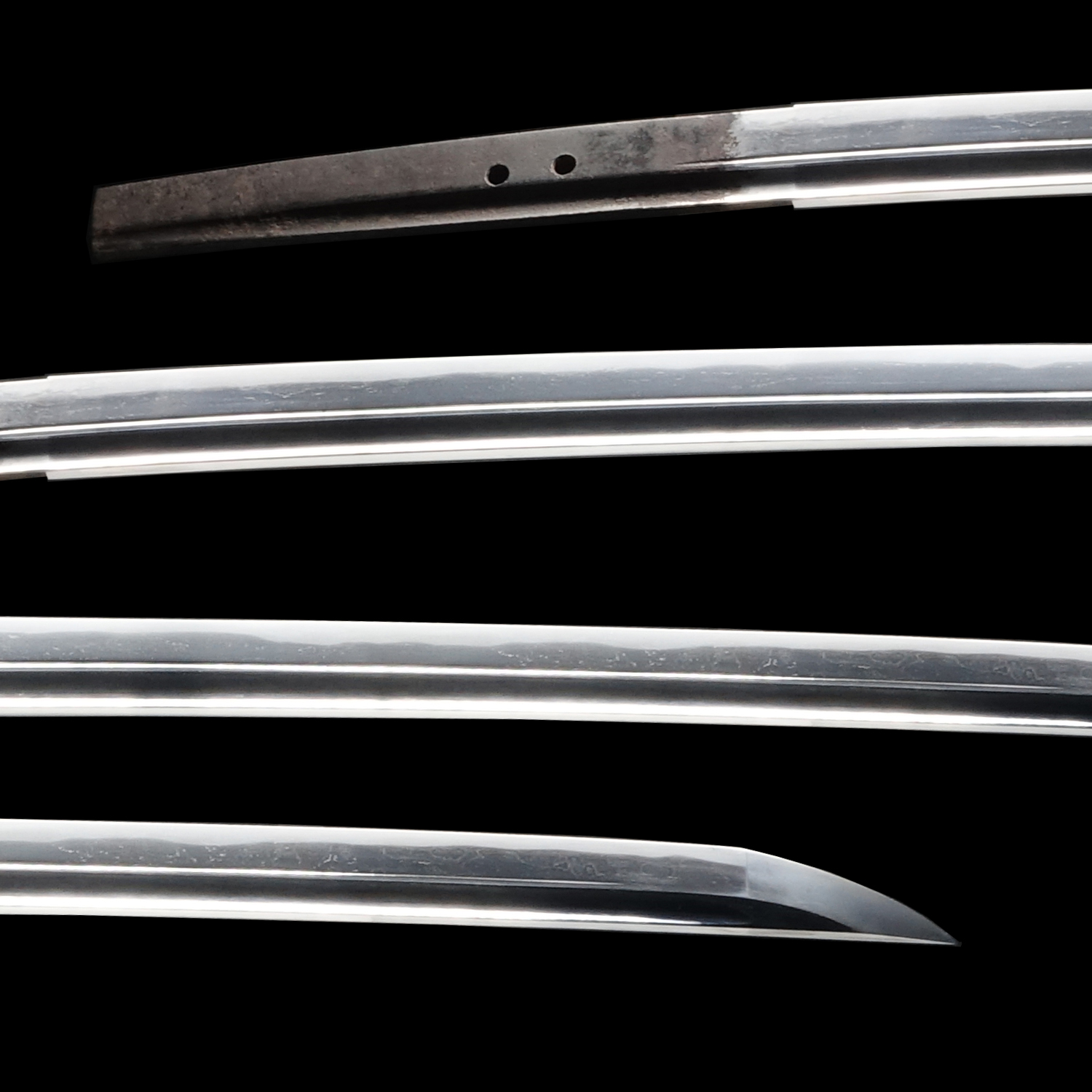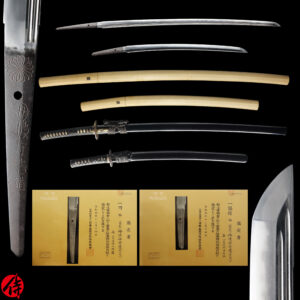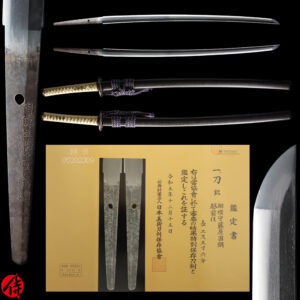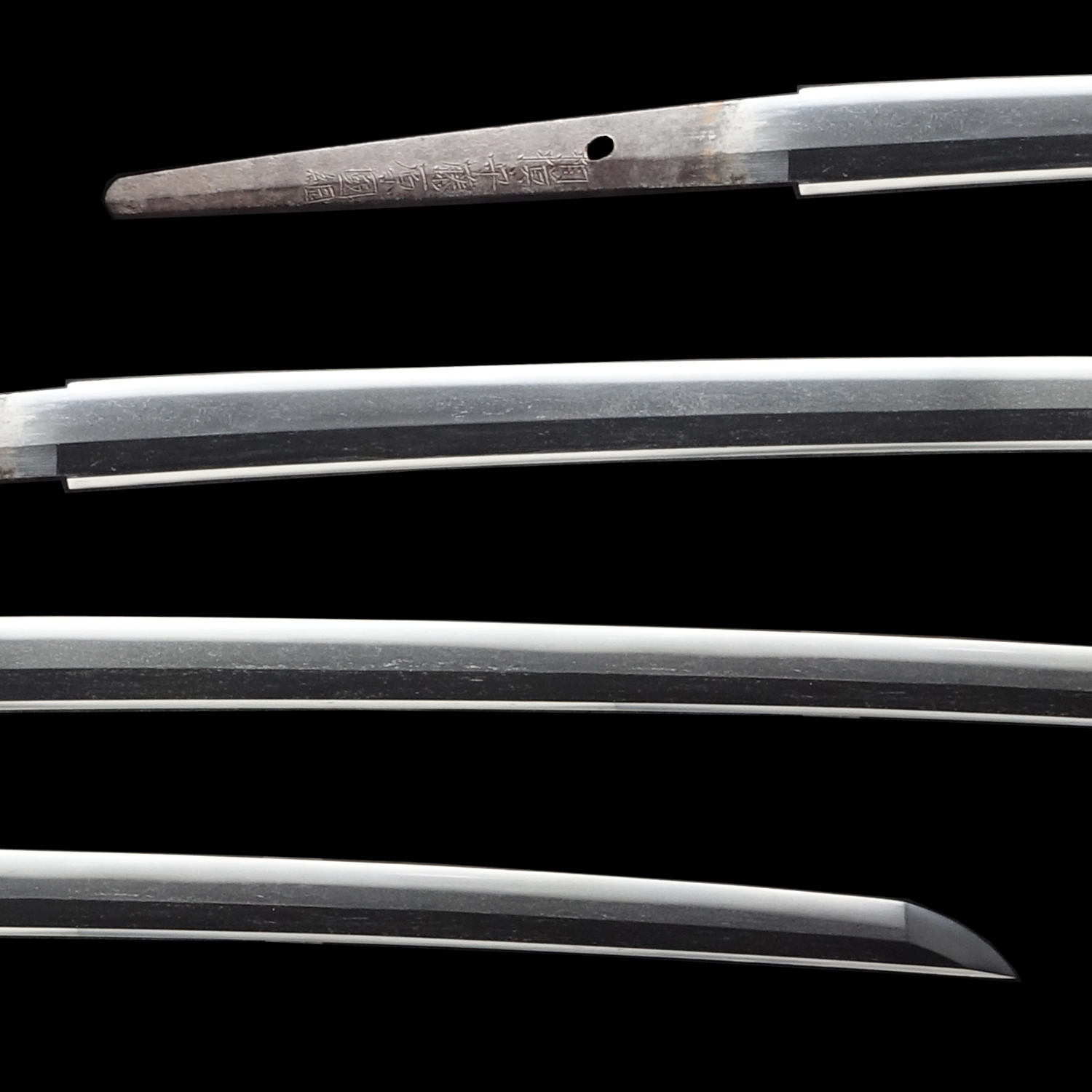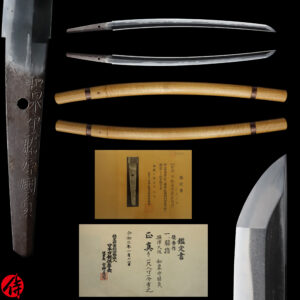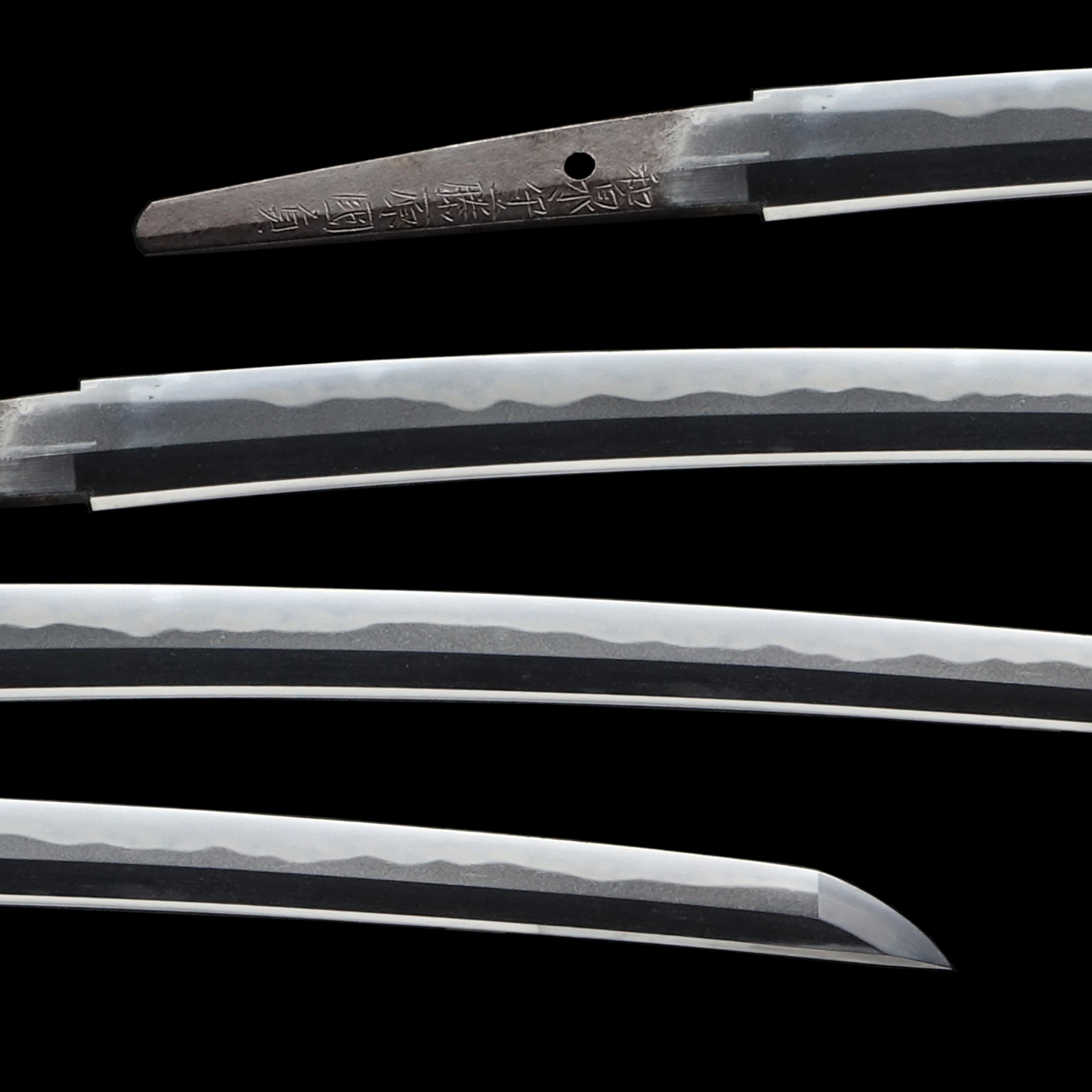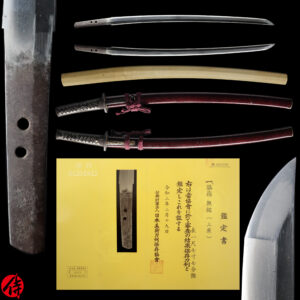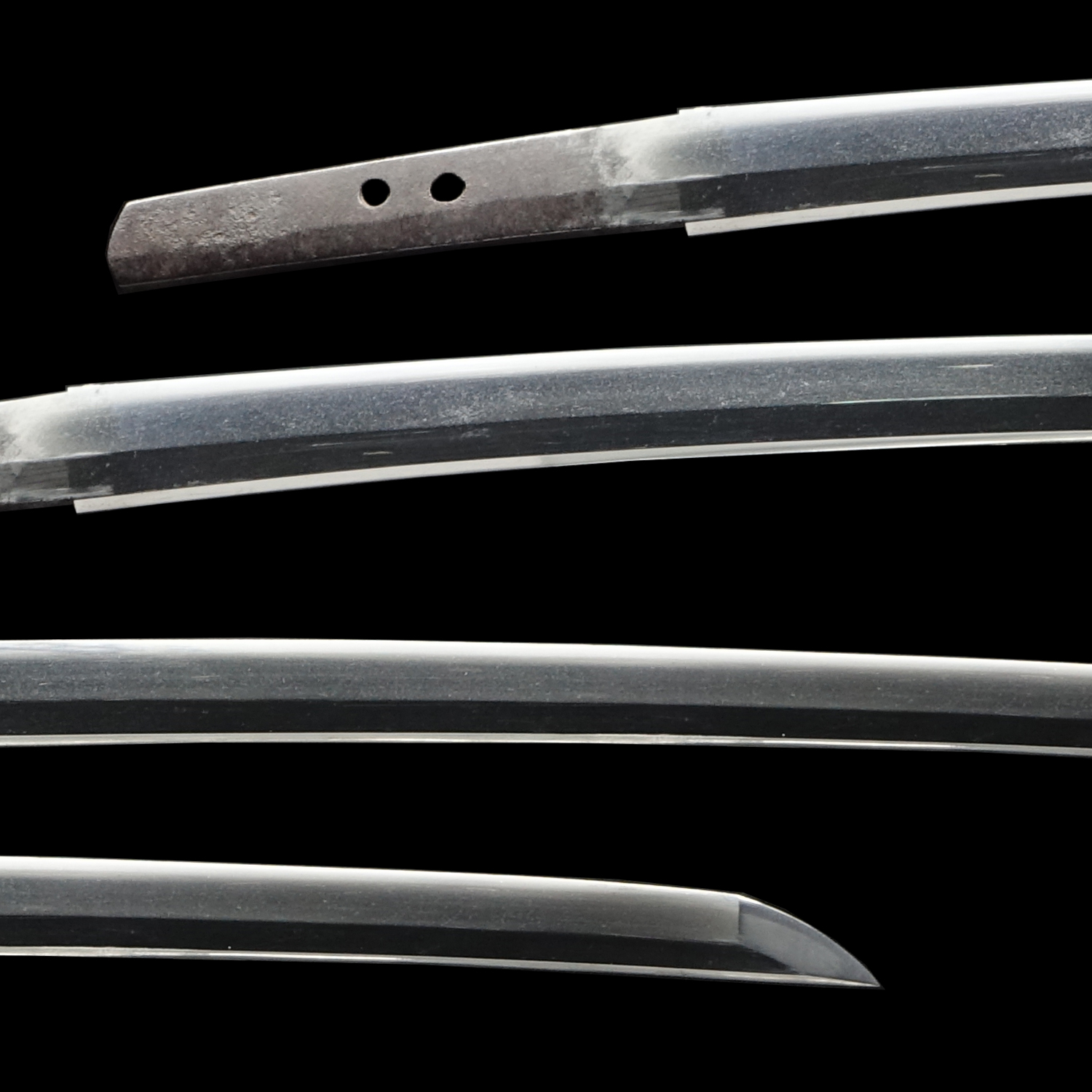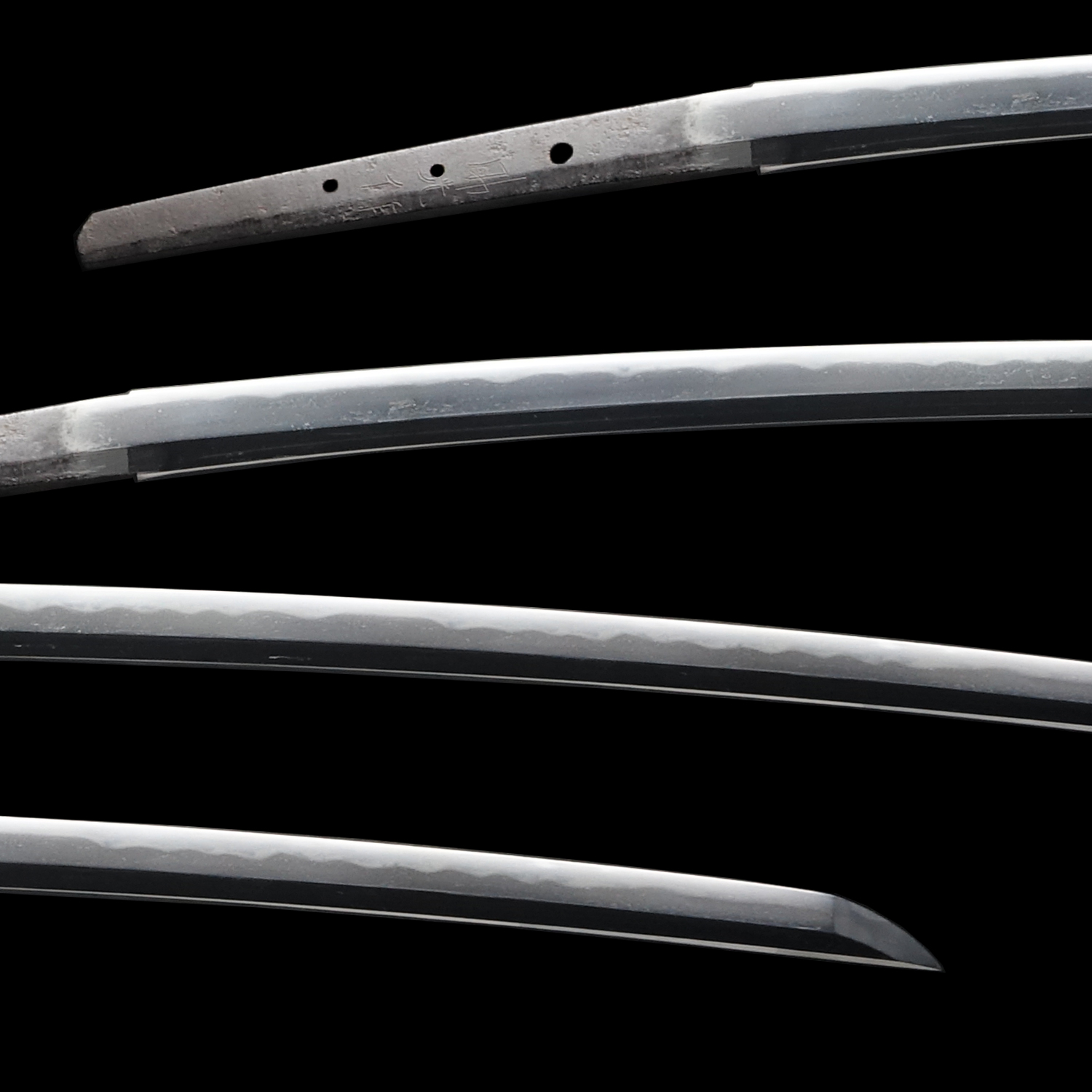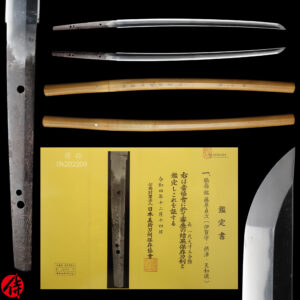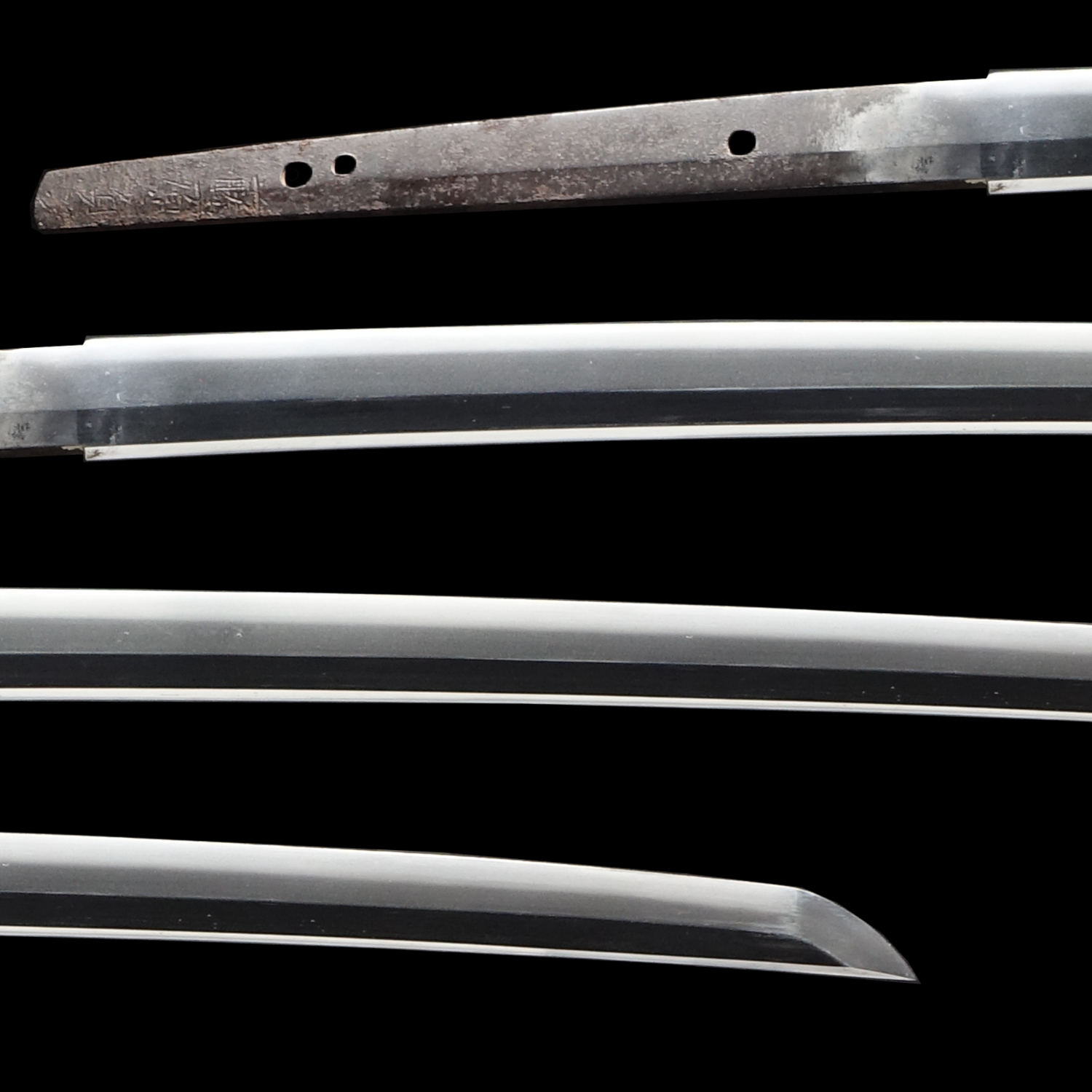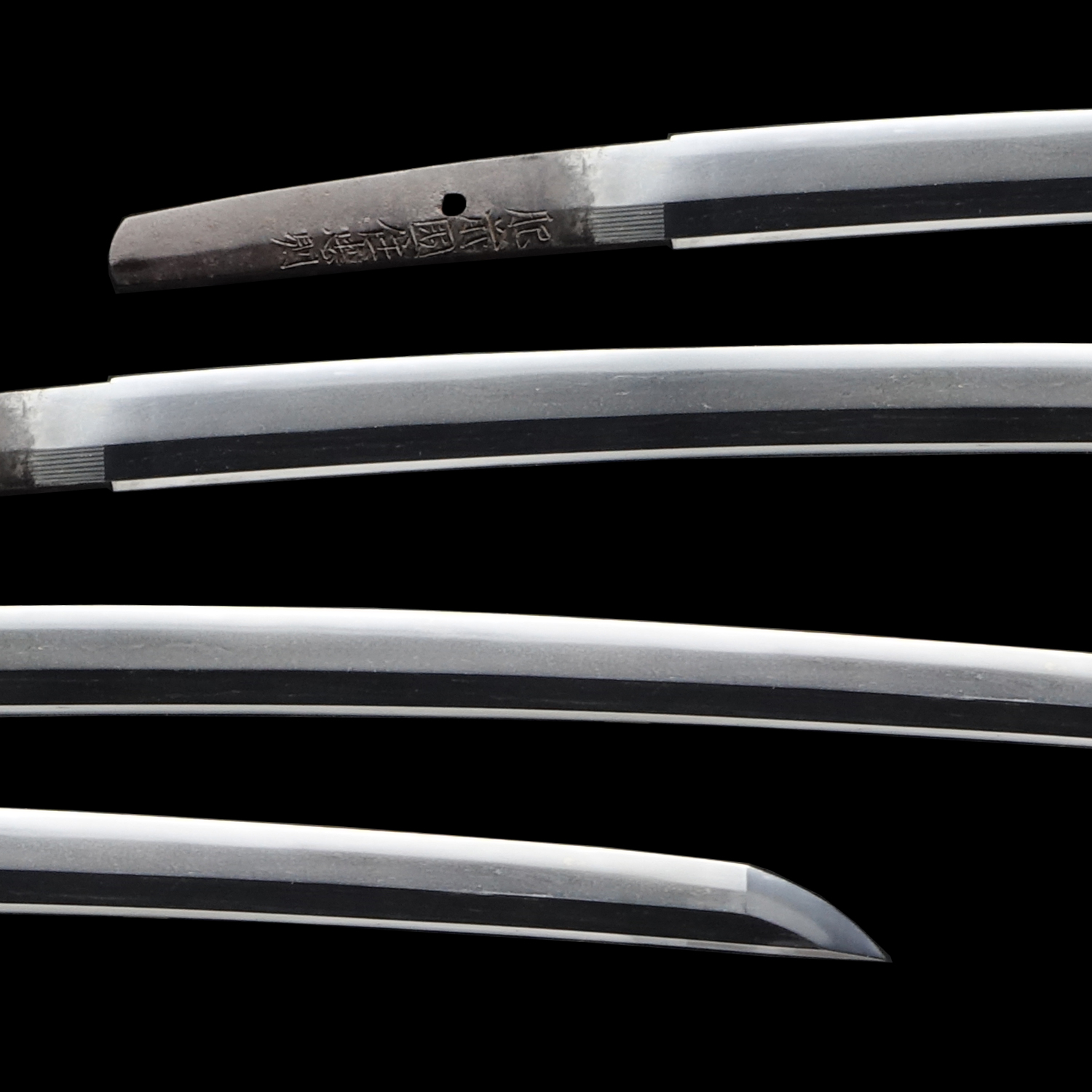【Episode 5】What is TAMA-HAGANE?
Japanese blacksmithing has over a millennium of history. It dates back to the 1st century A.D. when ancient blacksmiths studied template method from the continent. Copper pottery and rice farming techniques were also introduced to Japan at the same time.
Since then, Japanese blacksmiths had spent centuries to invent the traditional metal forging technique called TATARA(鑪). TATARA is a clay melting pot where you put iron sand and charcoal together to bond these chemicals with intensive heat.
By using this technique, they started to make Japanese swords out of Tatara carbon-steel.
This type of carbon-steel was later called TAMA-HAGANE (玉鋼; Ball-Steel). However, Tama-Hagane, in the early days, still had room for improvement. The schools of Katana (Japanese swords) continued carrying out various ways to make the best steel.
In the Edo period (1603-1868 A.D.), they finally achieved the most steady mass-producing supply of Tama-Hagane. As transport links in the Edo period were far more advanced than those of any previous eras, Tama-Hagane has rapidly spread throughout the country. It was widely used for Shin-TO Japanese swords, since it was deemed the purest form of carbon-steel with the most stable chemical bond. It was also a defining moment in Japanese history when most swordsmiths in Japan used virtually the same ingredient in their blacksmithing.
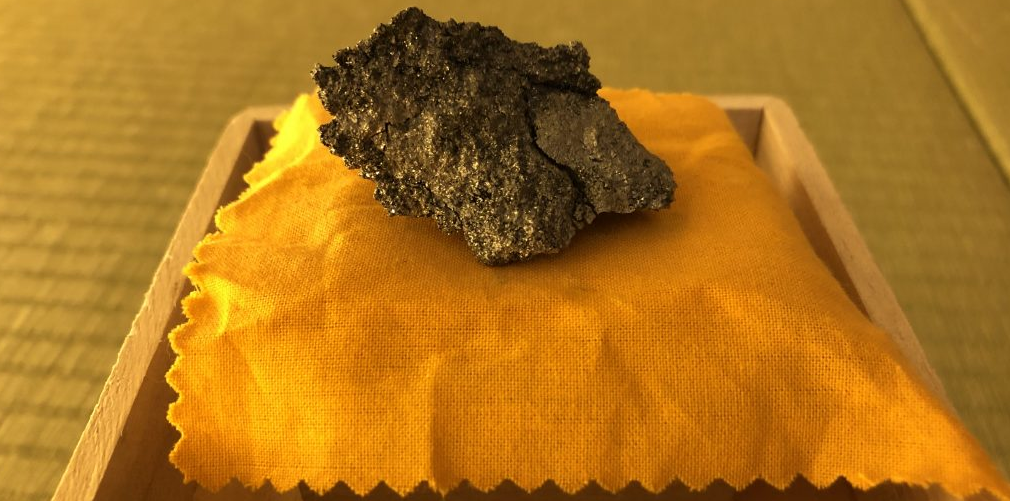
After the decline of the Samurai regime in the Meiji era (1868-1912 A.D.), Tatara and Tama-Hagane also vanished from Japan. Although it had once restored its use in the World War period, there was eventually no operating Tatara factory in Japan.
The Tatara method had been extinct until the 1970s. However, there was still no better metal material than Tama-Hagane in terms of its pureness and strength. Even the finest of modern technology could not create the alternative to Tama-Hagane.
In the year 1972, following all the struggles by the government and metal industry to bring Tatara back to life, it was NBTHK that presented themselves in charge.
They finally restored the traditional Tatara factory in the year 1977. Also, Tatara was selected as one of the traditional Japanese techniques that are legally worth preserving by the Agency for Cultural Affairs in Japan.
—————————————————————————————–
That is the history of TAMA-HAGANE. Did you enjoy this article? It seems to us that it is such an honor to have the kind of steel which has a deep-rooted history behind it in our culture. It would also be an honor if this article helped you understand Katana’s true art and history.
And if you don’t own a Japanese sword yet, we are happy to serve you at our online shop. You are welcome to ask us anything! We will see you in the next episode.
Samurai Museum
Email: order@samuraimuseum.jp
TEL:+81 3 6457 6411
Authentic Japanese Sword
-
$13,898.01

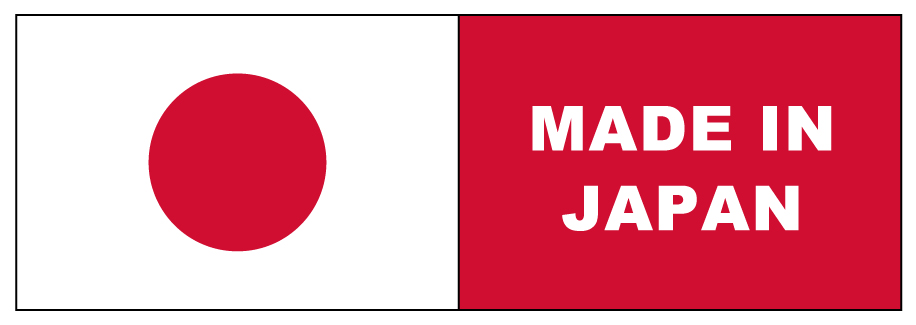
DELIVERY TIME : Approx. 1-1.5 months
*We ship from Tokyo, Japan. There might be delay in shipment depending on countries.
SHIPPING TO :
USA, UK, Canada, Mexico, Germany , Hong Kong, France, Australia
*Please contact us prior to purchase if your country isn’t listed.
INCLUDED : NBTHK Tokubetsu Hozon Certificate, Koshirae Mounting, Shirasaya Case, Traditional Sword Carrying Case, Sword Maintenance Kit, Full Exportation Support
| Category |
Katana ( SHINTO) |
| Age |
Early Edo Period (1641-1688) |
| Swordsmith |
Hizen Koku Jyu Omi no Daijyo Fujiwara Tadahiro
(肥前国住近江大掾藤原忠広) |
| Certificate |
NBTHK Tokubetsu Hozon Certificate |
| Location |
Hizen province (Today’s Saga prefecture) |
| Blade Size |
Cutting Edge Length: 72.4 cm (28.5 inches)
Curvature:1.66 cm (0.65 inches) |
More photos& videos available on request. Please feel free to contact us.
-
$10,739.37


DELIVERY TIME : Approx. 1-1.5 months
*We ship from Tokyo, Japan. There might be delay in shipment depending on countries.
SHIPPING TO :
USA, UK, Canada, Mexico, Germany , Hong Kong, France, Finland, Australia
*Please contact us prior to purchase if your country isn’t listed.
INCLUDED : NBTHK Tokubetsu Hozon Certificate, Koshirae Mounting, Traditional Sword Carrying Case, Sword Maintenance Kit, Full Exportation Support
| Category |
Katana ( KOTO) |
| Age |
Nanbokucho period |
| Swordsmith |
attributed to Suesa (末佐: Unsigned) |
| Certificate |
NBTHK Tokubetsu Hozon Certificate |
| Location |
Chikuzen Province (Today’s Fukuoka prefecture) |
| Blade Size |
Cutting Edge Length: 71.8 cm (28.2 inches)
Curvature: 1.1 cm (0.43 inches) |
More photos& videos available on request. Please feel free to contact us.
-
$27,164.30


DELIVERY TIME : Approx. 1-1.5 months
*There might be delay in shipment depending on countries
SHIPPING TO :
USA, UK, Canada, Mexico, Germany , Hong Kong, France, Australia
*Please contact us prior to purchase if your country isn’t listed.
INCLUDED : NBTHK Tokubetsu Hozon Certificate for Katana and Wakizashi , Shirasaya Case×2, Koshirae Mounting×2, Traditional Sword Carrying Case×2, Sword Maintenance Kit, Full Exportation Support
| Category |
Katana& Wakizashi ( SHINTO) |
| Age |
Early-Mid Edo period |
| Swordsmith |
The third-gen Yoshimichi (三代京丹波守吉道)
The fourth-gen Yoshimichi (四代京丹波守吉道) |
| Certificate |
NBTHK Tokubetsu Hozon Certificate for both blades |
| Location |
Yamashiro Province (Kyoto prefecture) |
| Blade Size |
Cutting Edge Length: 75.4 cm ( 29.7 inches)
Curvature: 1.30 cm ( 0.51 inches)
Cutting Edge Length: 50.0 cm ( 19.7 inches)
Curvature: 1.21 cm ( 0.47 inches) |
More photos& videos available on request. Please feel free to contact us.
-
$6,949.01


DELIVERY TIME : Approx. 1-1.5 months
*We ship from Tokyo, Japan. There might be delay in shipment depending on countries.
SHIPPING TO :
USA, UK, Canada, Mexico, Germany , Hong Kong, France, Finland, Australia
*Please contact us prior to purchase if your country isn’t listed.
INCLUDED : NBTHK Tokubetsu Hozon Certificate, Koshirae Mounting, Traditional Sword Carrying Case, Sword Maintenance Kit, Full Exportation Support
| Category |
Katana ( SHINTO) |
| Age |
Early Edo period (mid-late 17th century) |
| Swordsmith |
Sagami no Kami Fujiwara Kunitsuna (相模守藤原国綱) |
| Certificate |
NBTHK Tokubetsu Hozon Certificate |
| Location |
Echizen Province (Today’s Fukui prefecture) |
| Blade Size |
Cutting Edge Length: 71.5 cm (28.1 inches)
Curvature: 1.3 cm (0.51 inches) |
More photos& videos available on request. Please feel free to contact us.
-
$9,475.92


DELIVERY TIME : Approx. 1-1.5 months
*We ship from Tokyo, Japan. There might be delay in shipment depending on countries.
SHIPPING TO :
USA, UK, Canada, Mexico, Germany , Hong Kong, France, Finland, Australia
*Please contact us prior to purchase if your country isn’t listed.
INCLUDED : NBTHK Tokubetsu Hozon Certificate, NTHK Yushu Saku Certificate, Shirasaya Case (Plain Wooden Case), Traditional Sword Carrying Case, Sword Maintenance Kit, Full Exportation Support
| Category |
Wakizashi (SHINTO)
|
| Age |
Early Edo period (Early 17th century) |
| Swordsmith |
Izumi no Kami Fujiwara Kunisada (和泉守藤原国貞) |
| Certificate |
NBTHK Tokubetsu Hozon Certificate |
| Location |
Settsu province (Today’s Osaka prefecture) |
| Blade Size |
Cutting Edge Length: 54.8 cm (21.5 inches)
Curvature: 1.6 cm (0.63 inches)
|
More photos& videos available on request. Please feel free to contact us.
-
$3,790.37


DELIVERY TIME : Approx. 1-1.5 months
*We ship from Tokyo, Japan. There might be delay in shipment depending on countries.
SHIPPING TO :
USA, UK, Canada, Mexico, Germany , Hong Kong, France, Finland, Australia
*Please contact us prior to purchase if your country isn’t listed.
INCLUDED : NBTHK Hozon Certificate, Shirasaya Case, Koshirae Case, Traditional Sword Carrying Case, Sword Maintenance Kit, Full Exportation Support
| Category |
Wakizashi ( KOTO) |
| Age |
Early- Mid Muromachi period (Late 14th-Early 15th century) |
| Swordsmith |
attributed to Mihara (三原: Unsigned) |
| Certificate |
NBTHK Hozon Certificate |
| Location |
Bingo province(today’s Hiroshima prefecture) |
| Blade Size |
Cutting Edge Length : 53.8 cm ( 21.2 inches)
Curvature : 1.2 cm (0.47 inches)
|
More photos& videos available on request. Please feel free to contact us.
-
$6,317.28


DELIVERY TIME: Approx. 1-1.5 months
*We ship from Tokyo, Japan. There might be delay in shipment depending on countries.
SHIPPING TO:
USA, UK, Canada, Mexico, Germany, Hong Kong, France, Finland, Australia
*Please contact us prior to purchase if your country isn’t listed.
INCLUDED: NBTHK Hozon Certificate, Koshirae Case (Decorative Sword Mounting), Shirasaya Case, Traditional Sword Carrying Bag, Sword Maintenance Kit, Full Exportation Support
| Category |
Katana (KOTO :古刀)
|
| Age |
Late Muromachi Period |
| Swordsmith |
Sukemitsu (助光) |
| Certificate |
NBTHK Hozon Certificate |
| Location |
Unknown, possibly Suruga province (Today’s Shizuoka prefecture) |
| Blade Size |
Cutting Edge Length: 72.7 cm (28.6 inches)
Curvature: 2.1 cm (0.82 inches)
|
More photos& videos available on request. Please feel free to contact us.
-
$6,317.28


DELIVERY TIME : Approx. 1-1.5 months
*We ship from Tokyo, Japan. There might be delay in shipment depending on countries.
SHIPPING TO :
USA, UK, Canada, Mexico, Germany , Hong Kong, France, Finland, Australia
*Please contact us prior to purchase if your country isn’t listed.
INCLUDED : NBTHK Tokubetsu Hozon Certificate , Koshirae Case (Decorative Sword Mounting), Shirasaya Case, Traditional Sword Carrying Case, Sword Maintenance Kit, Full Exportation Support
| Category |
Wakizashi (SHIN SHIN TO)
|
| Age |
The third year of the Kyowa era (1803) |
| Swordsmith |
Tada Takakatsu (多田貴勝) |
| Certificate |
NBTHK Tokubetsu Hozon Certificate |
| Location |
Harima province (Today’s Hyogo prefecture) |
| Blade Size |
Cutting Edge Length: 40.2 cm (15.8 inches)
Curvature: 0.5 cm (0.19 inches)
|
Thank you for visiting our website. This sword was sold as each antique Japanese sword is one of a kind. However, we might be able to show you something similar because we have various types of swords available. Also, there are ones that aren’t listed on the website yet. Our customer service will help you find your ideal blade you will cherish for generations. Please feel free to contact us or check the list of swords. We will be more than happy to help you.
-
$2,842.78


DELIVERY TIME : Approx. 1-1.5 months
*We ship from Tokyo, Japan. There might be delay in shipment depending on countries.
SHIPPING TO :
USA, UK, Canada, Mexico, Germany , Hong Kong, France, Australia
*Please contact us prior to purchase if your country isn’t listed.
INCLUDED : NBTHK Hozon Certificate, Shirasaya Case (Plain Wooden Case), Traditional Sword Carrying Case, Sword Maintenance Kit, Full Exportation Support
| Category |
Wakizashi (SHINTO)
|
| Age |
Tenwa era (1681-1684) |
| Swordsmith |
Fujiwara Sadatsugu (藤原貞次) |
| Certificate |
NBTHK Hozon Certificate |
| Location |
Settsu province (Today’s Osaka prefecture) |
| Blade Size |
Cutting Edge Length: 59.2 cm (23.3 inches)
Curvature: 1.0 cm (0.39 inches)
|
More photos& videos available on request. Please feel free to contact us.
-
$2,526.91


DELIVERY TIME : Approx. 1-1.5 months
*We ship from Tokyo, Japan. There might be delay in shipment depending on countries.
SHIPPING TO :
USA, UK, Canada, Mexico, Germany , Hong Kong, France, Australia
*Please contact us prior to purchase if your country isn’t listed.
INCLUDED : NBTHK Hozon Certificate, Shirasaya Case (Plain Wooden Case), Traditional Sword Carrying Case, Sword Maintenance Kit, Full Exportation Support
| Category |
Wakizashi (SHINTO)
|
| Age |
Early Edo Period (1661-1673) |
| Swordsmith |
Hizen Koku Jyu Tadanori (肥前国住忠則) |
| Certificate |
NBTHK Hozon Certificate |
| Location |
Hizen province (Today’s Saga prefecture) |
| Blade Size |
Cutting Edge Length: 51.4 cm (20.2 inches)
Curvature: 1.2 cm (0.47 inches)
|
Thank you for visiting our website. This sword was sold as each antique Japanese sword is one of a kind. However, we might be able to show you something similar because we have various types of swords available. Also, there are ones that aren’t listed on the website yet. Our customer service will help you find your ideal blade you will cherish for generations. Please feel free to contact us or check the list of swords. We will be more than happy to help you.

